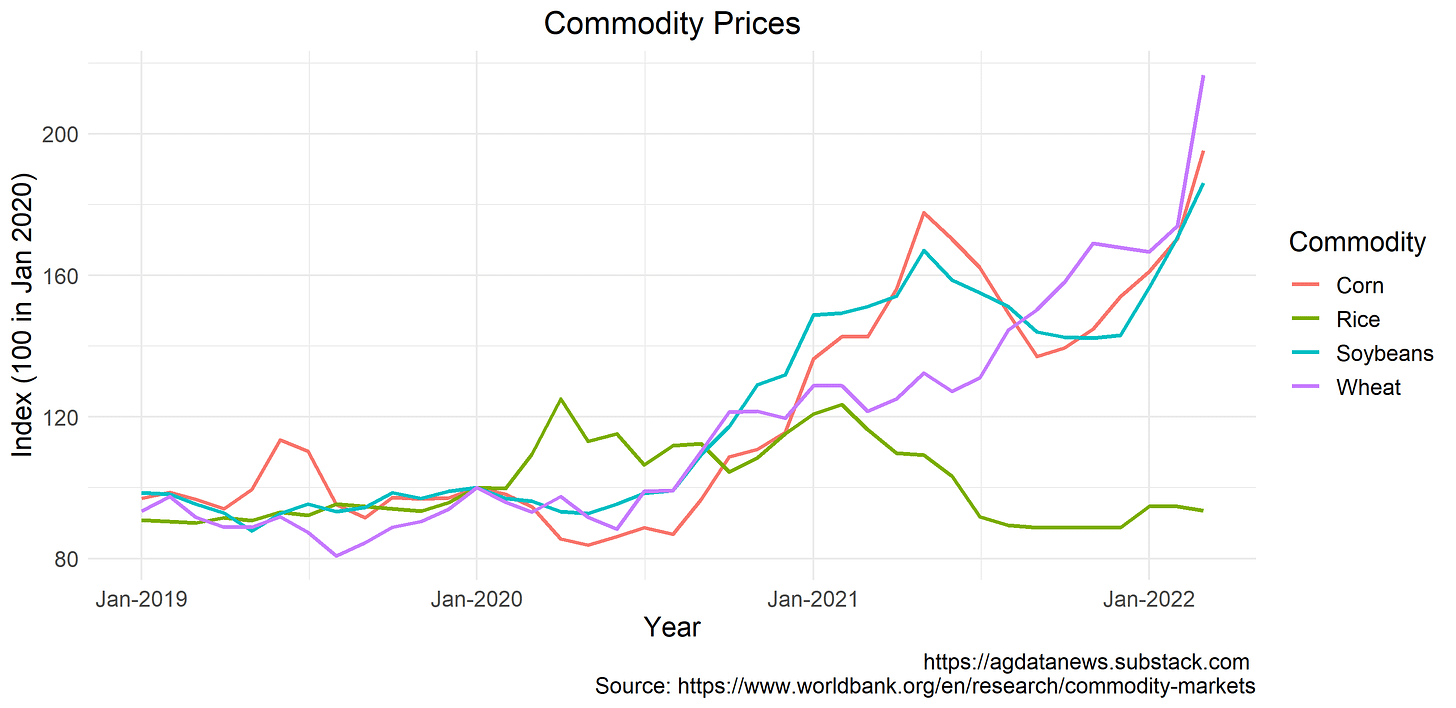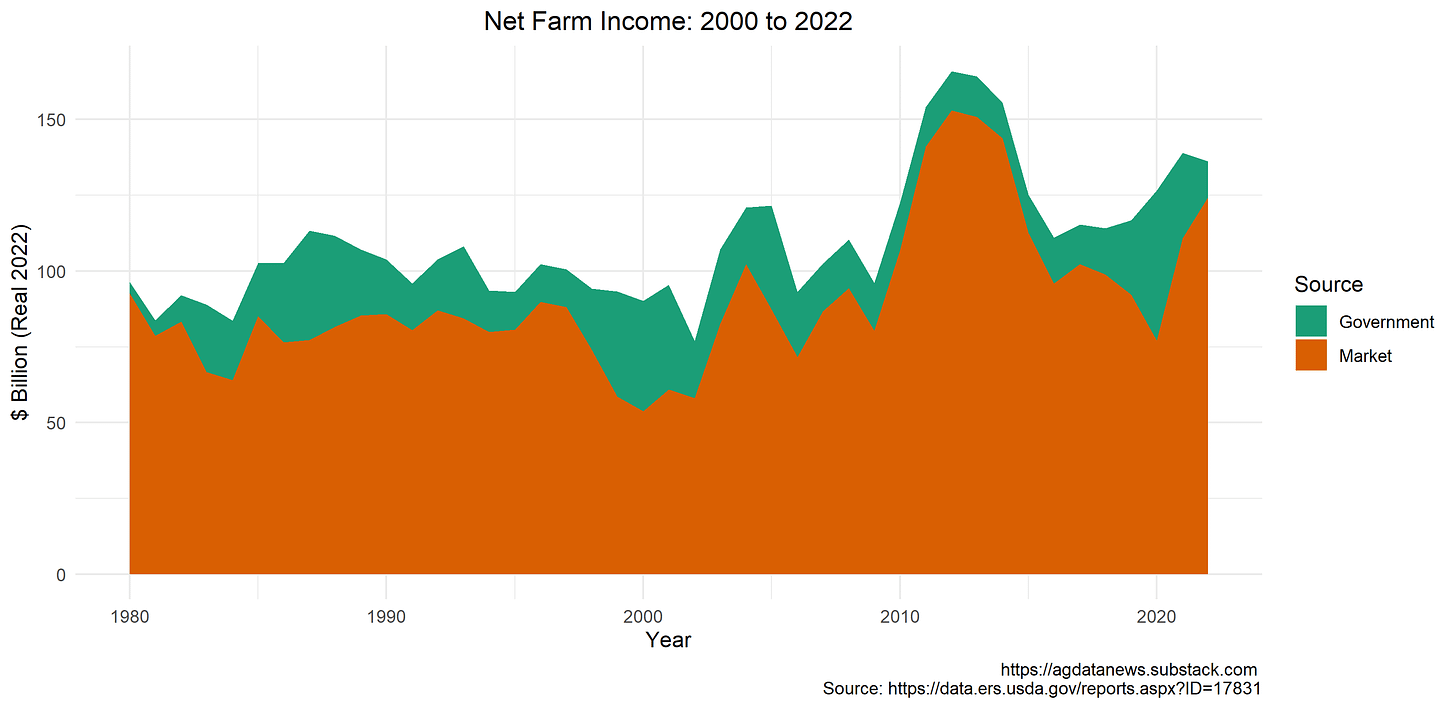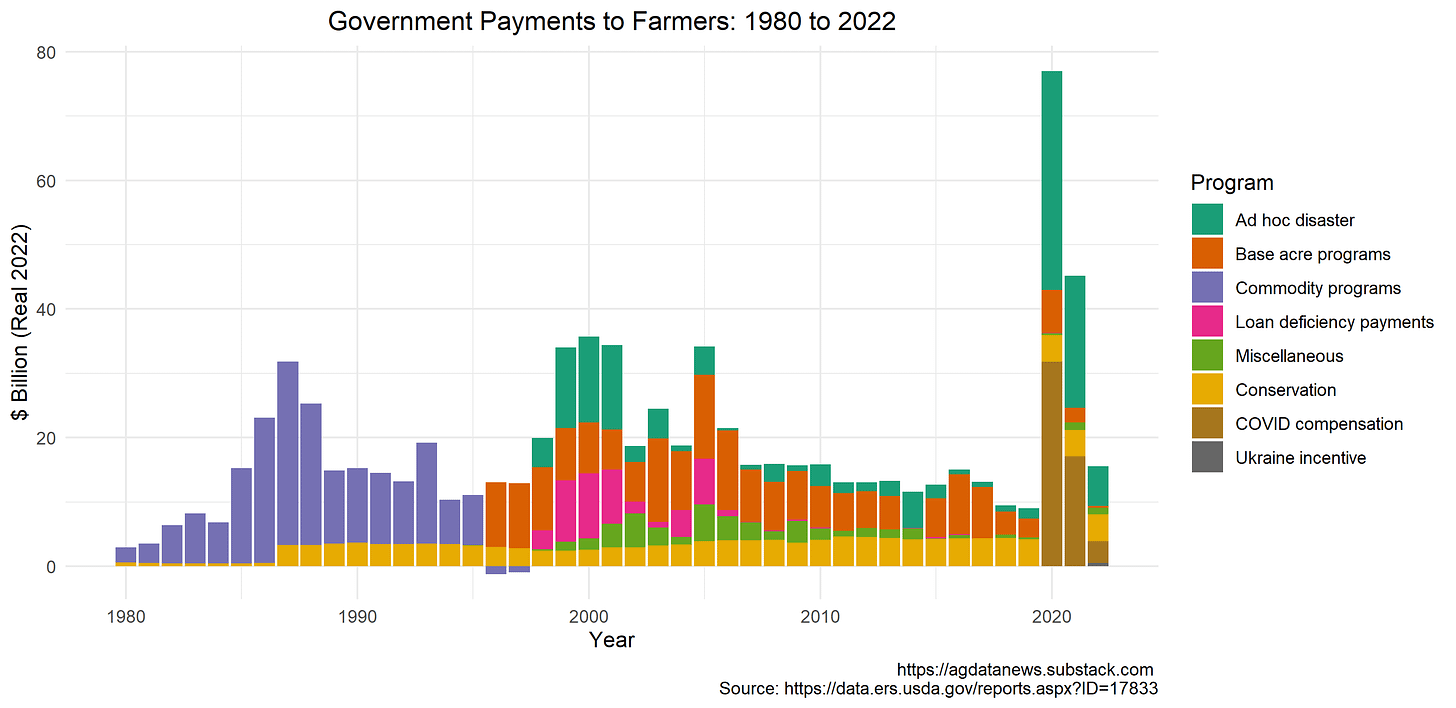Is this Another Handout to Farmers?
Today, the Biden Administration called for Congress to allocate $33 billion for "critical security and economic assistance to Ukraine." The request includes $20.4 b for security and military assistance, $8.5b for economic assistance, and $3b for humanitarian assistance.
I don't have the expertise to assess whether the amounts in each category are appropriate, but those all seem like good things,
If you were tracking the numbers, you may have noticed that 20.4+8.5+3 is less than 33. Where will the rest of the requested money go?
Here is a partial answer.
An additional $500 million in domestic food production assistance will support the production of U.S. food crops that are experiencing a global shortage due to the war in Ukraine, for example, wheat and soybeans. Through higher loan rates and crop insurance incentives the request provides greater access to credit and lowers risk for farmers growing these food commodities, while lowering costs for American consumers.
As I argued here, here, and here, the term "global shortage" is an exaggeration and the claim "due to the war in Ukraine" is false. Corn, wheat, and soybean prices are high, which means the world would like more of these commodities. Most of the price increases occurred prior to the invasion, so it is not attributable to the war.
High crop prices incentivize farmers to plant more acres. The more urgently the world needs the commodity, the higher will be the price incentive. The government only needs to step in if there is some regulatory or anti-competitive barrier preventing additional production. That is not the case here.
American farmers have had a profitable last few years. Boosted by government payments, net farm income in 2021 was the fifth highest since 1980, beaten only by the boom years of 2011-2014. USDA projects net income to be almost as high in 2022.
Government payments contributed a lot to incomes in 2020 and 2021. USDA projects them to be closer to normal in 2022.
In aggregate, the $500m slated for agriculture in the Biden proposal is small relative to other government payments, but how will they spend it?
Reuters reported quotes from a USDA official stating that $100m would be used to pay $10 per acre to farmers who plant soybeans in 2023 following a 2022-23 winter wheat crop. An additional $400m would go marketing assistance loans, especially to growers of wheat and soybeans.
Assuming this report correctly characterizes the plan, I find it hard to see how the cost to taxpayers could be anywhere close to $500m.
First, $10 per acre is a pittance. Farmers in Missouri, which is one state where farmers double-crop wheat and soybeans, are looking at soybean revenue of about $800 per acre this year. An additional $10 is not going to coax them to add a winter wheat crop unless they had planned on doing it anyway.
I don't know how many acres of double-cropped wheat and soybeans there are each year, but I doubt it's much more than a couple million acres. So, it's hard to see this program getting anywhere close to $100m. (The CDL identifies double-cropped wheat and soybeans, so an enterprising person could sum those pixels to estimate acreage, but I haven't done that.)
Second, marketing assistance loans are given to farmers at harvest time to enable them to hold onto their crop and sell it later at a potentially higher price. They can either pay back the loan in cash after they sell their crop or they can pay it back in grain.
The proposed grain payback rates are $5.51 for wheat and $8.68 for soybeans. These rates are 63% and 40% above the current rates, but the current wheat price is over $11 and the current soybean price is over $16. Right now, farmers could lock in 2023 futures prices over $10 for wheat and over $14 for soybeans. If you can sell wheat on the open market for $10, you are not going to give it to the government for $5.51.
Unless I'm reading this wrong, farmers will take out these loans and then pay them back in cash. I don't see how taxpayers will end up spending $400m.
So, it looks like this is posturing with very little intention to actually spend many taxpayer dollars. Am I missing something?
I made the graphs in this article using this R code.






